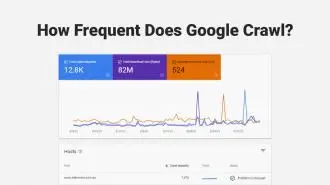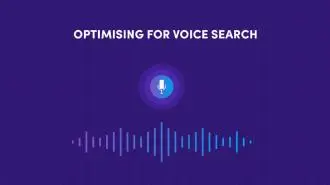Summary
Optimising for Google’s Featured Snippets involves crafting concise, high-quality content designed to satisfy user intent and rank among the top ten search results. There are four main featured snippet types: paragraph, listicle, table, and video, each with specific formats and word counts. Effective strategies include conducting detailed keyword research—especially long-tail queries—structuring content clearly with headings and concise answers, and using factual data, bullet points, and visuals. Incorporating schema markup, updating outdated images, and continuously monitoring performance using SEO tools like Ahrefs and SEMrush also improve visibility. Although top-ranked sites are more likely to be featured, snippets often come from results below the first position, highlighting the importance of content quality and relevance over rank alone.
Writing a blog post that skillfully uses featured snippets can be a powerful way to build your brand and boost organic referral traffic from Google searches.
Often called the ‘featured snippet spot’, Google’s Featured Snippets highlight selected search results right on the search results page (SERP). They give you insights on getting your content featured. These snippets, found in a Google box, pull the most relevant information from top-ranking sites to answer user queries.
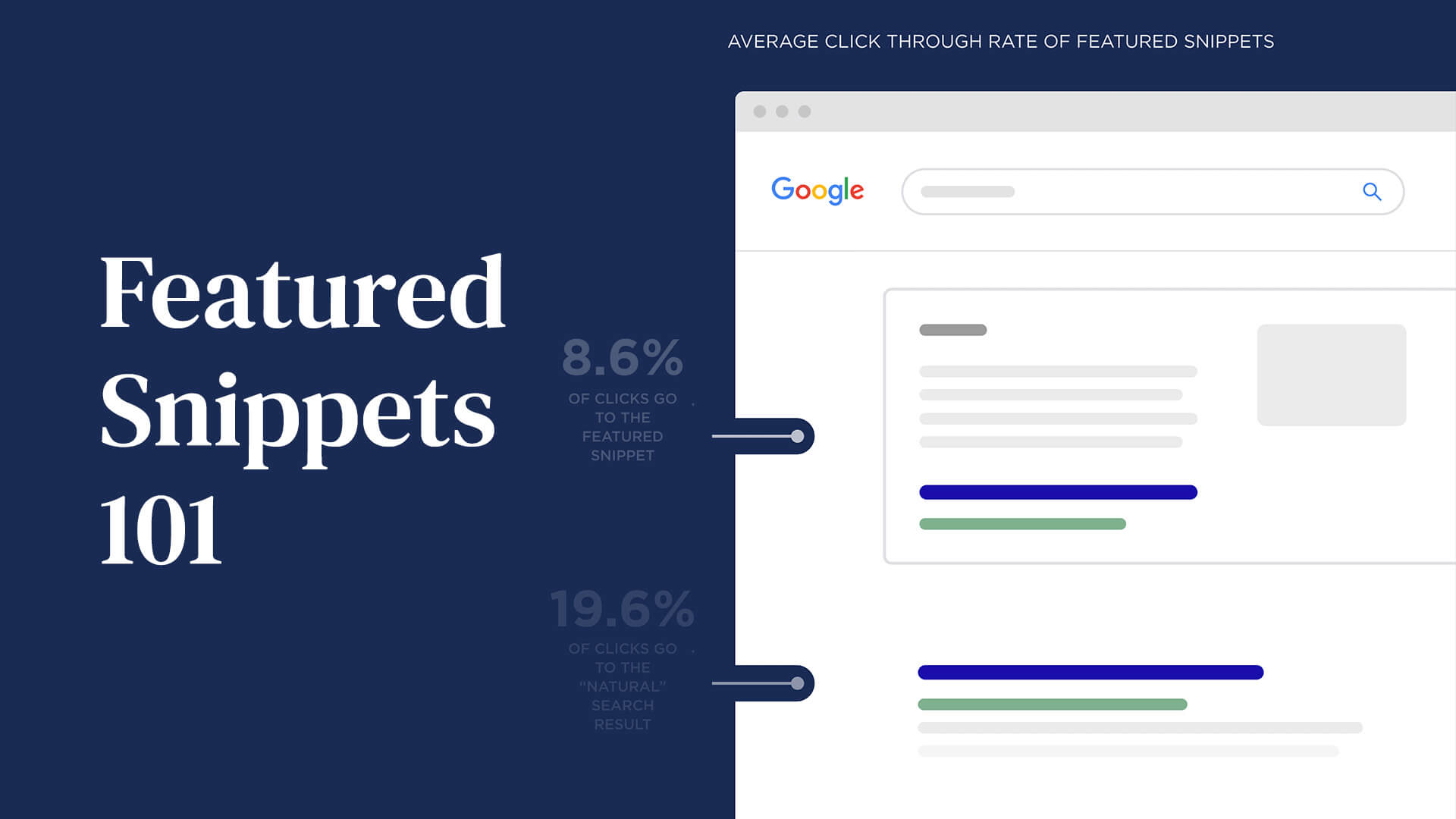
From a brand’s perspective, Google Featured Snippets can effectively gain featured snippet optimisation strategies more exposure and increase organic traffic to its website. Learning how to optimise for featured snippets and several other techniques are available to optimise your content, including using structured data to create Google-rich text snippets and optimising for featured snippets.
However, before we do, we shall learn about the featured snippets available. So, let’s get down to it.
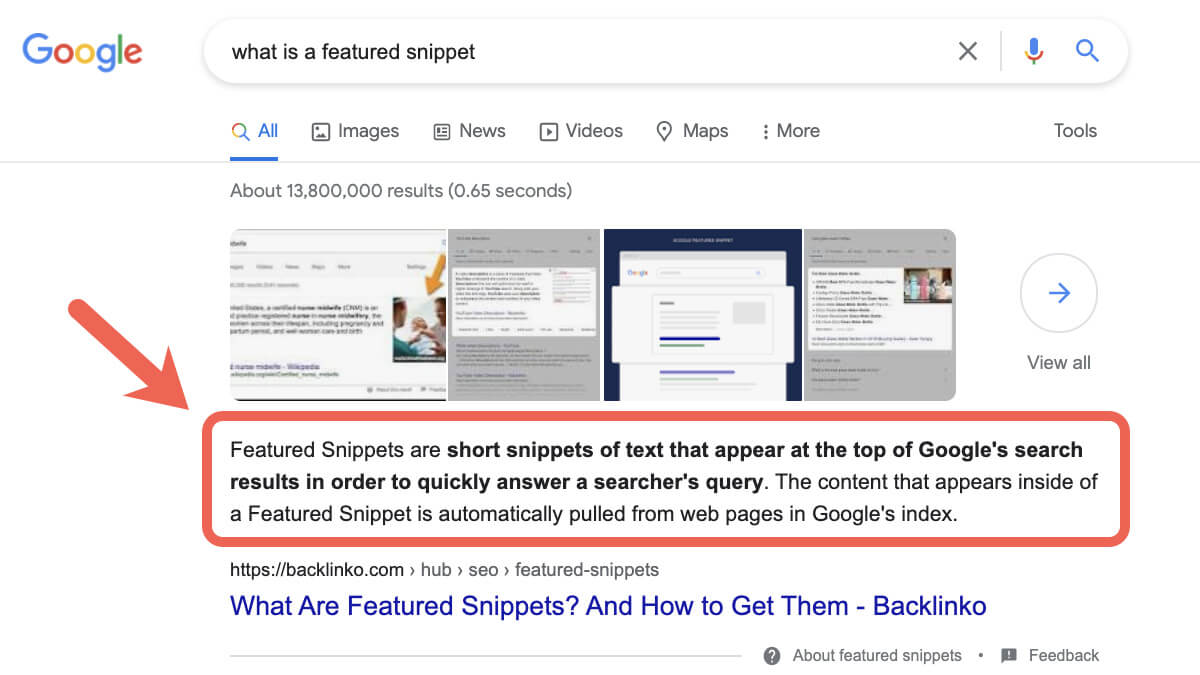
Types Of Featured Snippets
Determining the type of featured snippets in Google Search, you’d like to feature as a paragraph featured snippet in Google’s search queries. Knowing about them is beneficial for planning and implementing the optimisation strategy that is most effective for your brand. Let us talk about them in detail.
Want to receive updates? Sign up to our newsletter
Each time a new blog is posted, you’ll receive a notification, it’s really that simple.
1. Paragraph Featured Snippets
Most Google featured snippets come as Paragraph Search Snippets, delivering the results as text.
These can either be in the form of a box containing text or a box that includes both text and an image, often referred to as the featured snippet position, making it the most common type of featured snippet box. Here’s a featured snippet example: These snippets generally range from 42 to 250 words, the typical featured snippet length, and can have more than a single image.
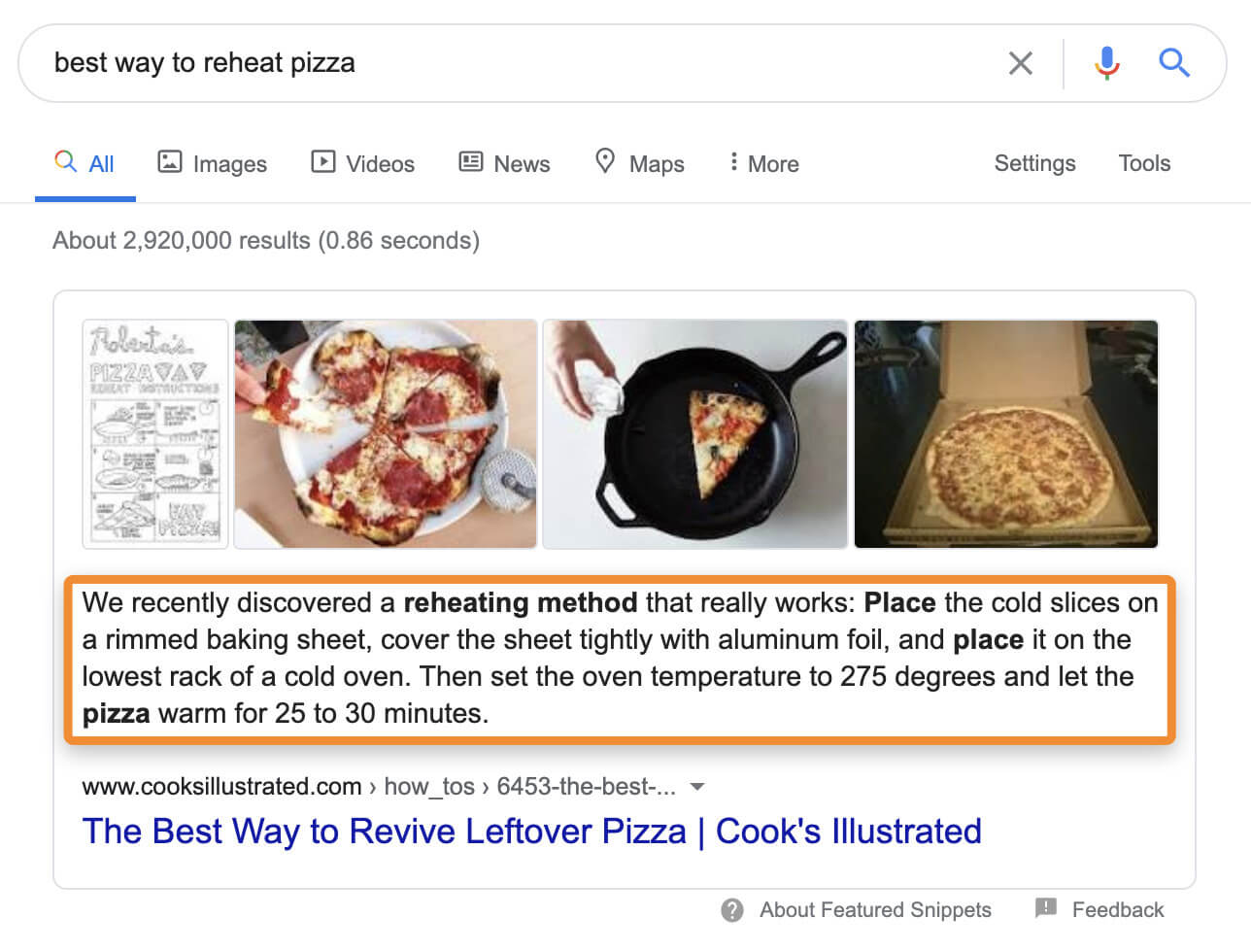
A paragraph snippet is by far the most common type of snippet, often occupying position 0, often occupying position zero in organic results.
2. Listicle Featured Snippets
These featured snippets Google Snippets account for the second-highest results after how many featured snippets Paragraph Featured Snippets.
They generally consist of about six items and up to 44 words. List snippets can be subdivided into Ordered or Numbered list Lists and Unordered Lists, Unordered Lists, or Bullet Lists.
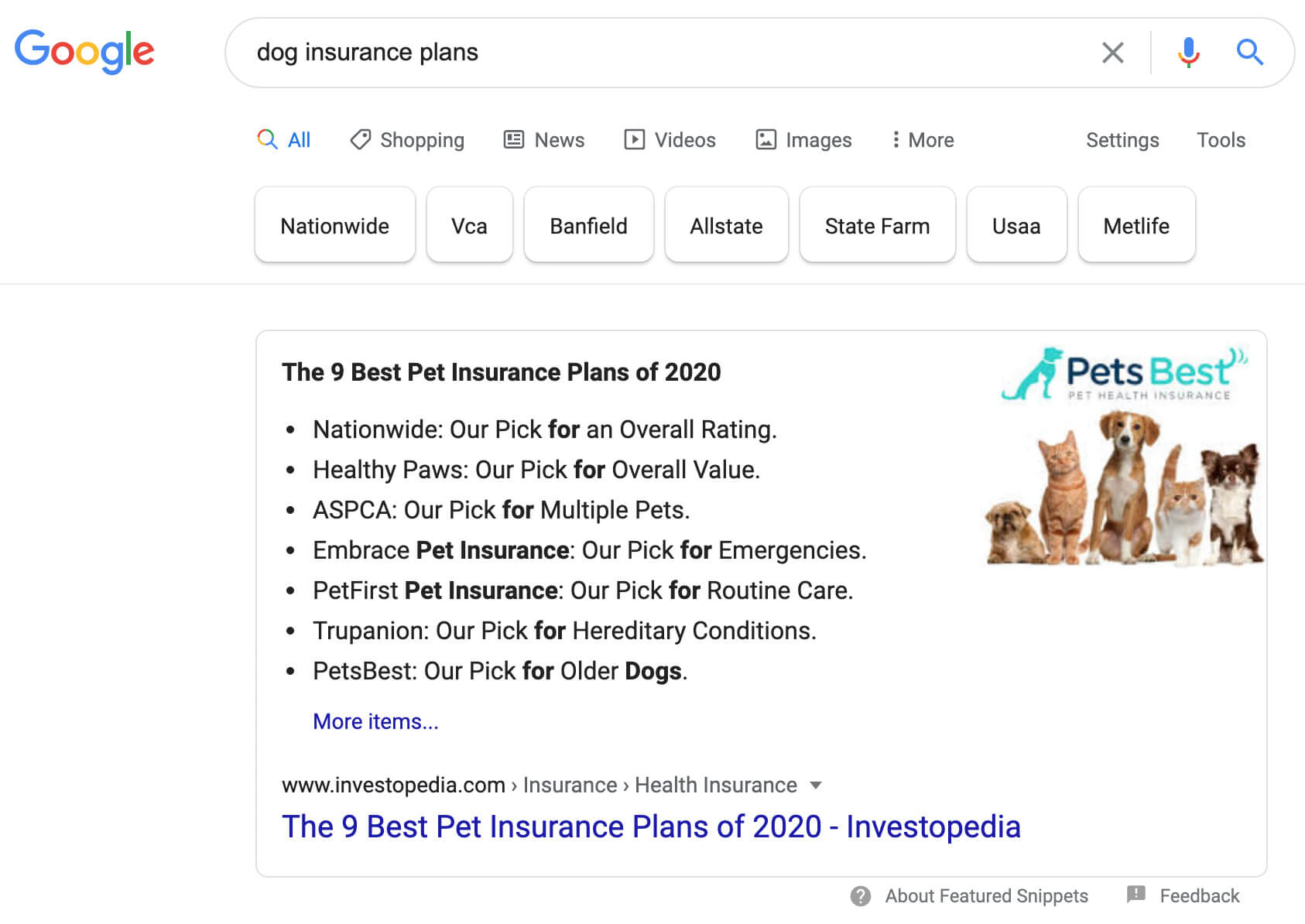
3. Table Featured Snippets
When the results appear in a table-featured snippet, they are called table-featured snippets. They generally have two columns and five rows, with 45 words.
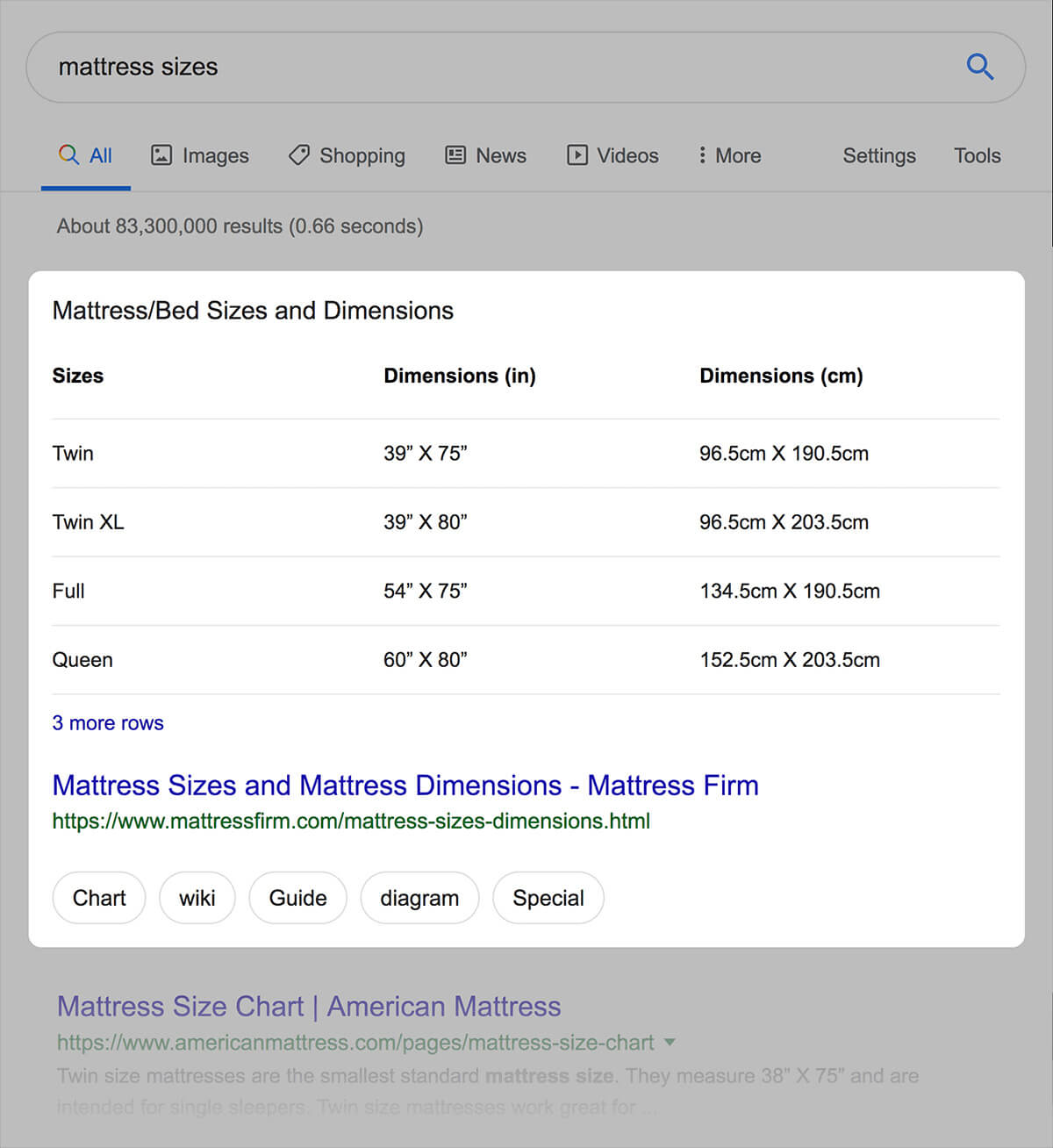
4. Video Featured Snippets
Video Featured Snippets are less common than other snippets, and most featured snippets come from YouTube. Usually, a video featured snippet is around six minutes and thirty-five seconds long, making it a 6 min read.
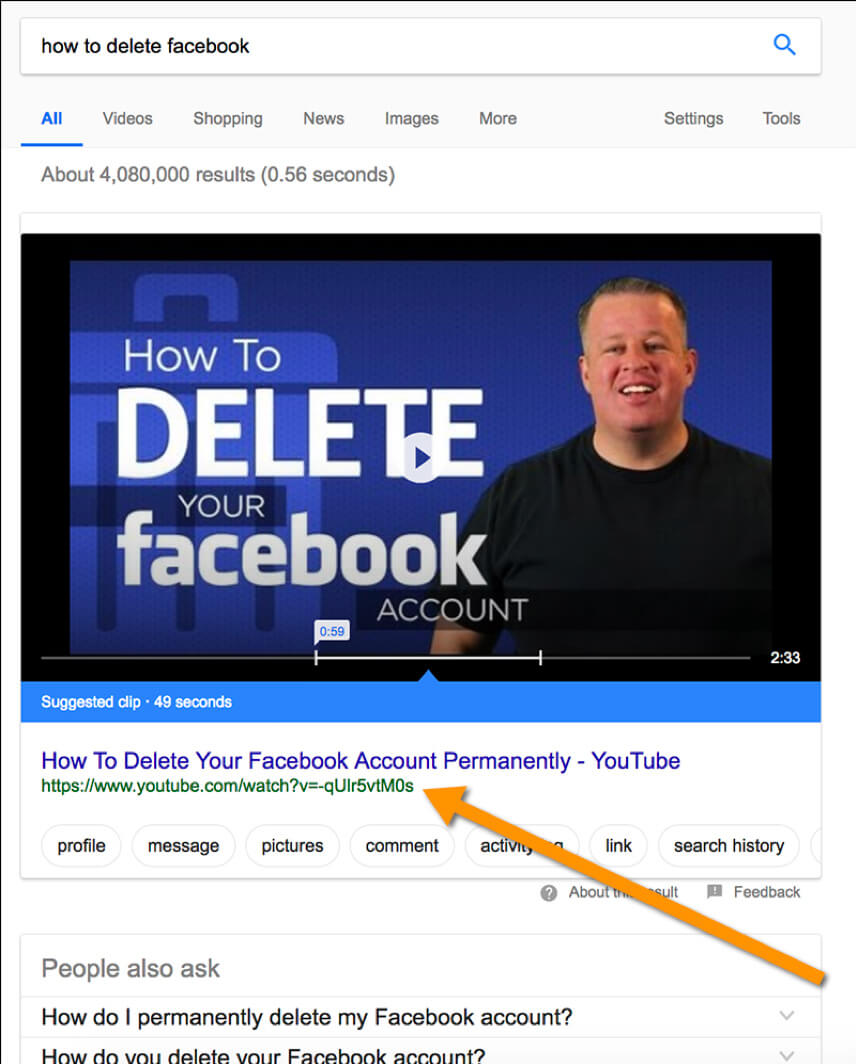
Other Types Of Search Results
Besides Featured Snippets, Google shows search results in multiple formats within the search engine, some of which may resemble snippets but are not identical. These include:
1. Google Knowledge Panel
A Knowledge Panel is an information box that provides information from different sources when searching for something on Google. It appears on the right side of the search results and provides a summarised snapshot, especially after recent Google video snippets drop information regarding a topic.
Knowledge panels conveniently gather all relevant facts in one spot, making it easy to find the answer you’re after.
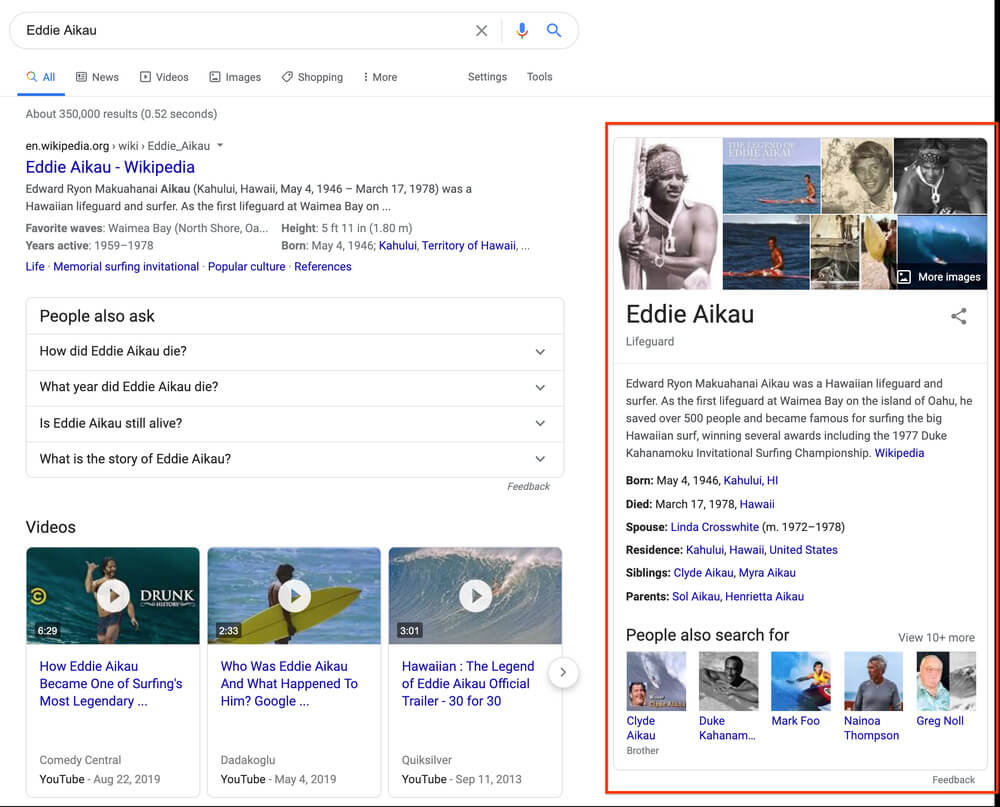
2. Google Knowledge Card
A Knowledge Card is generally the featured image at the top of search results. Like Knowledge Panels, Knowledge Cards are also a part of Google’s Knowledge Graph. They provide a general overview regarding the topic of the query. The highest-ranking website that provides results for the search query owns the Knowledge Card.
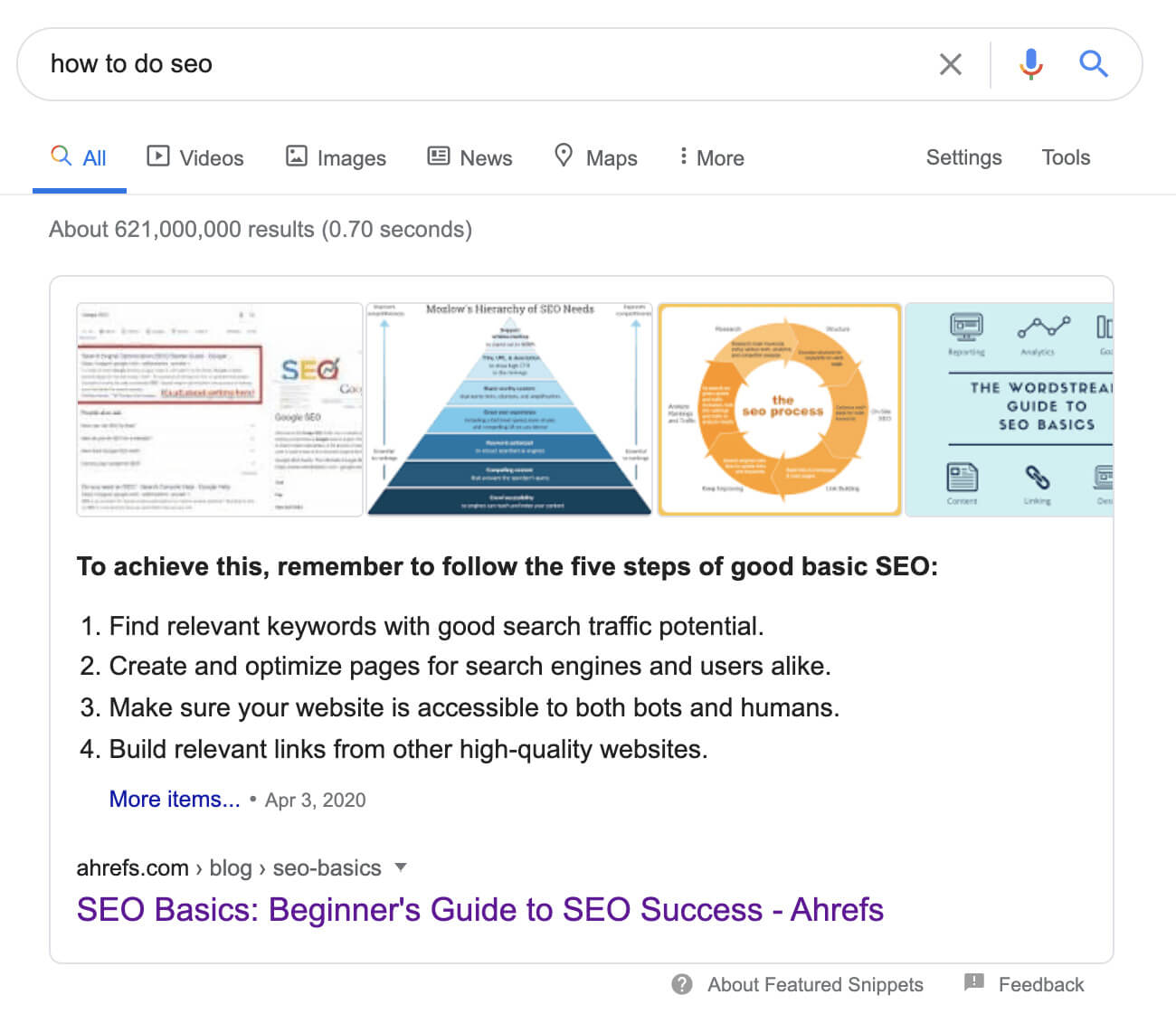
3. Google Entity Carousel
An Entity Carousel is also primarily meant for mobile devices. Google Search improves featured snippet displays, providing easy-to-browse information on how to get featured on Google Search. These results generally appear for ranked entities that belong to the same category and are most useful for local search results, enhancing the search experience through clear and concise content often written in first-person language.
A Google Carousel is an interactive search result that allows the searcher to quickly and easily find relevant content using any mobile device. It can be helpful for discoverability and promoting content in the featured snippet format.
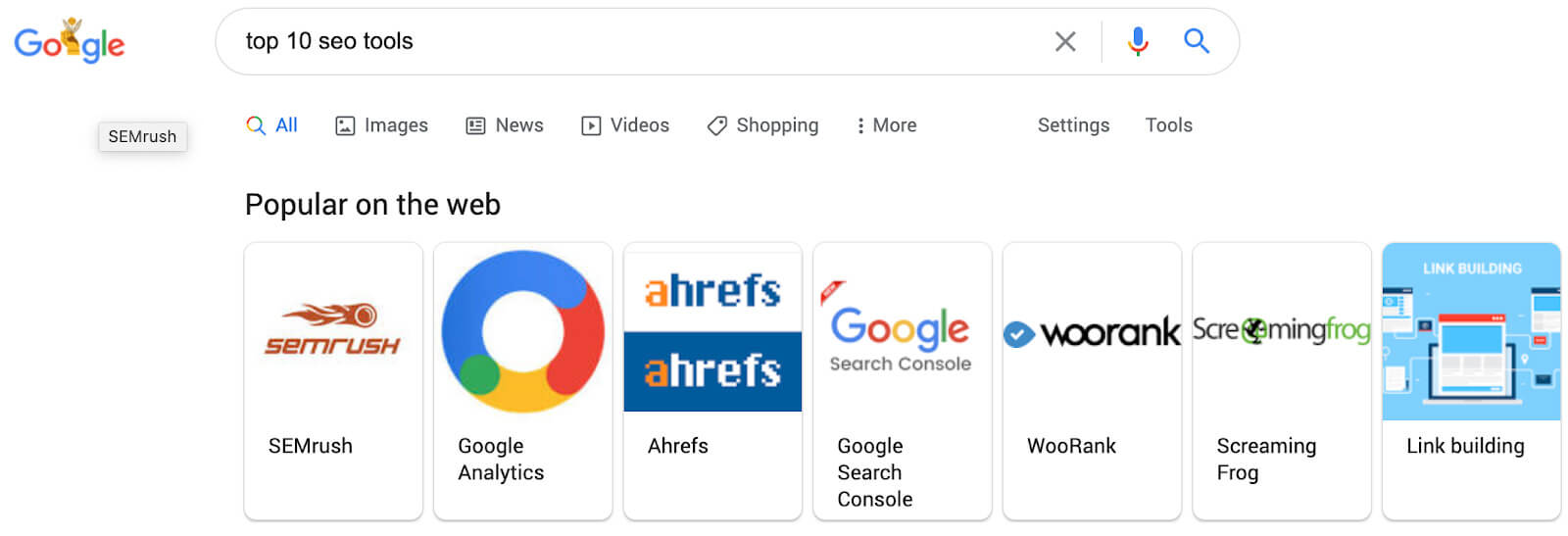
The Probability Of Getting Featured
Ahrefs, one of the best-known companies that develops SEO, has a newly popular featured snippet tool. It also conducts market research related to Google Search Results. According to its study, 99.58% of the pages in Featured Snippets come from websites that rank among the top ten in the SERP.
This means that websites with a high ranking in the search results are likely to get featured, making featured snippets important. The higher the ranking, the greater the chance of getting a featured snippet.
Another company, Getstat, says that about 70% of the snippets on Google’s Featured Snippets come from websites outside the first organic position. Therefore, the content needs to make it to the top ten list to get your snippet featured, but it does not need to be in the top spot. However, once you get a featured snippet, reaching the number one position becomes much more accessible.
Some of the different search queries that might lead to a Google search snippet with the highest number of SERP features and Google feature snippet featured results include topics related to health, finance, DIY techniques, transitional, status, etc.
Identifying Opportunities For Getting Featured
Before optimising content for Google featured snippets, it’s crucial to understand how to get featured snippets in search and how to get featured snippets on Google to identify opportunities for identifying opportunities for featured snippets, often using an organic keywords report. Like all search result optimisation processes, proper keyword research is the primary step.
Conducting Keyword Research
Keyword research is the process that SEO specialists utilise to find and research the most popular terms within Google’s organic search results, particularly long tail keywords, that appear in various search queries on the internet. Most studies indicate that if you want to trigger featured snippets, then long-tail keywords are the best way. The higher the number of words in the search query, the more probable it is to have a featured snippet.
Undertaking keyword research is the first and foremost step in optimising search results. Some key points to keep in mind when conducting keyword research are as follows:
- Search queries in the form of questions (what, why, how) are the easiest to identify.
- Try to identify the intent of the user’s search query.
- Look for similar or related questions on Google to learn more about the topic.
- Phrases for which you already rank high are the easiest to get featured.
- The Google Search Console is an excellent tool to help you identify your top-performing results.
- Understand how to optimise for featured snippets, considering that in addition to your target audience, you can also try to find the questions that other people search for, as outlined in the featured snippets quick start guide.
- Use Seed Keywords, a research tool to discover related keywords from friends and family.
- Utilise the power of social media platforms such as Twitter, Facebook, and Instagram.
Optimising For Google Featured Snippets
After doing your keyword research with the tools available, it’s time to optimise your website. This process includes several steps to help your content secure a featured snippet, which we’ll discuss now.
To get your snippet featured in Google’s search results, you need to create content that can surpass the already ranking snippet of your competitor for that search query, which is not an easy task. The initial step to winning featured snippets involves identifying and analysing featured snippet competitors analyse featured snippet competitors.
Search for keyword groups that own the snippets by entering your competitors’ URLs for snippet optimisation in the application. After finding the list, categorise them into various types of featured snippets and sort them by the highest search volume. It would be best to keep this in mind when optimising for Google snippets to determine the Intent behind a query for table snippets and the best snippet format, including how to get Google featured snippets.
A proper understanding will help create better answers with a greater possibility of ranking higher. While each query’s intent will generally differ, the answers should always be informational.
Techniques For On-Page SEO
Since being featured is only possible if your answers have a good ranking, starting with general practices for improving the ranking is an excellent idea. The first and foremost thing you can do is provide a better answer than the one in the competitors’ snippet on how to get featured snippet, considering various featured snippet formats. Some of the ways to do that are mentioned below.
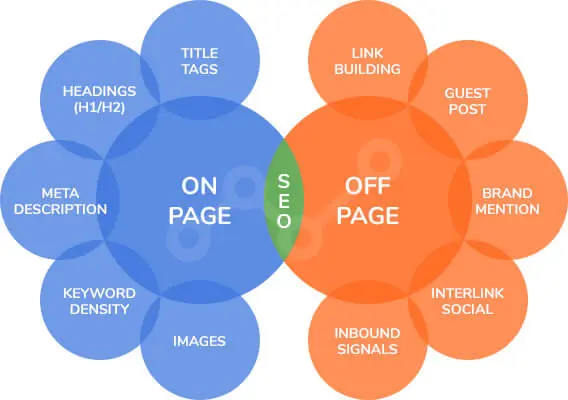
1. Provide Concise Answers And Better Content
A scientific analysis of various featured snippets indicates that Google prefers to feature clear and concise results. This means that answers with fewer paragraphs are more likely to be featured. The average featured snippet length is around 45 words, which should explain how to compose your result effectively using tools like seomofo snippet.
Shorter and simpler sentences also help improve readability when creating content. However, it does not mean that every answer must be restricted to a single paragraph. Recent trends show that Google is shifting towards cornerstone content, which benefits voice search featured snippets. Cornerstone content, often featuring ideas on featured snippets to increase traffic, includes the best and most important articles on a website to increase your chances of being featured.
Long articles also help to cover related topics and questions. They can help you retain a more significant number of visitors to your website by offering content that is easier to read. Additionally, the maximum word count for finding featured snippet opportunities is generally around 95 words, so you can effectively use that word length.
2. Use More Facts And Objective Data
One common factor in most featured snippets, especially list featured snippets, is that they are highly factual. Snippets often contain steps, lists, etc., making it easier for readers to find what they want.
If possible, ensure your answer includes as much factual information as objectively and concisely as possible. Similarly, Bullet points and comparison charts increase the chances of your content being featured. Using numbers and numerical data can also help in this aspect.
Besides factual information, Another way to get a featured snippet is by ensuring proper content structure and organisation. Providing answers in a properly structured format makes for a better user experience, helping viewers save time and effort. For more comprehensive strategies, refer to this complete guide featured snippets.
Try adding more content for featured snippets by including media elements, pointers, illustrations, examples, etc. Research-based content is usually better than opinion-based content.
3. One Article For Several Questions
According to Ahrefs’ study, if a page gets featured, it will also get featured in other similar queries. This insight can serve as a guide on how to get a featured snippet for your own content. It is best to compile the content on web pages to answer several related questions and appear in the People Also Ask sections.
Google’s advanced AI swiftly identifies queries and questions that are closely related while prioritising content rankings on the first page, aiming for that first position. Having content that answers many questions related to the same topic increases your content’s chance of getting featured and appealing to the first person conducting the search, which makes sense. Besides, it also helps reduce the effort you would otherwise put into creating a separate page for how you get featured on Google search for each answer.
Including question keywords in heading tags is another way to increase getting featured. Most featured snippets tend to begin after a heading tag.
Additionally, the longer the content can deliver value, the more effective it is. If your answer remains relevant for a longer time, such as for a certain number of years, it also tends to acquire a higher ranking. However, creating such content also depends on the type and nature of the query, as information can change over time depending on the topic.
4. Organising Questions And Validating The Content
Including answers to several questions in a single article is better and more efficient. However, you need to ensure that the questions are correctly organised to do that. Better-organised questions can also help you structure your content more impactfully. They can also improve readability, contributing to improving the ranking of the content.
Well-organised content is easier to read, more comprehensive, and more straightforward to understand, and it meets search engine requirements. Once the content has been prepared, ensure it meets specific criteria, including the targeted keywords, defined user search intent, listed suggestions, the target audience, etc. It is best to validate the data to ensure no errors and discrepancies.
5. Utilising Attention-Grabbing Images
Paragraph featured snippets generally include eye-catching images and pictures. To increase the chances of getting your article featured, it is best to have high-quality images relevant to the topic. Images should also be branded and annotated correctly.
Good-quality graphics are essential for owning a featured snippet, especially for a listicle or paragraph type. Custom images or real-life pictures are generally better than stock images. Also, avoid using generic images and include different or unique pictures that can set your content apart, especially for a list featured snippet from the competition.
The Google rich snippet tool and WordPress plugins are some of the best methods for properly visualising your page. Several plugins can help create high-quality, visually appealing pages with tables, charts, and graphs backed by extensive featured snippet research.
Another great tool for featured snippets is Bannersnack, which helps create attention-grabbing branded images for rich snippet optimisation with powerful image editing functionality. You can use it to create suitable images and resize and edit them for use on multiple platforms.
6. Updating And Re-Uploading Images
WordPress is undoubtedly one of the most popular platforms for Creating websites. It aids in formulating a table of contents to rank at the top of Google’s clear table of contents. Unfortunately, one of the issues with using featured snippets WordPress for your website is that it adds dates to image URLs. This can cause a problem, as even after updating the content of an article, the images will be considered old.
You can Upload newer images after updating the article’s content to resolve the issue of Google featured snippets not showing. This will update the existing image and its uploaded date, ensuring it appears as a more recent article in the search results. For more detailed advice, refer to the complete guide featured snippets.
Using custom images instead of stock ones will generally be better for this purpose, as stock images will most likely be present on several other websites. According to various studies, 99.58% of featured snippets come from websites that rank in the top 10 of Google’s SERP.
7. Running A Competitive Analysis
Tools such as SEMrush can help comprehensively analyse how your answers perform in contrast with the competition. They can also simplify your task by using a Google featured snippet API to provide SEO recommendations for content that can be best optimised for featured snippets.
Basic SEO recommendations help make the content search-friendly. Look at the top ten rivals for target keywords to help identify the competition. Similarly, you can also get critical recommendations regarding what should be included in the content. It can consist of several elements, such as the necessary backlinks, ideal text length, minimum required level of readability, etc.
Studying how competitors are using keywords can be of great help in understanding how to maximise their utility. Once the analysis is complete, you can adjust the content according to the findings, potentially using a Google snippet tool for further optimisation. The content outline must be created for any new content in light of recent research results. Similarly, the outline can be altered for better results for older content.
8. Monitoring And Adjustment
Ahrefs is the most popular website that allows monitoring different domains to track featured snippets. It provides the domain rating for each website, which can be very helpful in determining its performance. If the domain rating is not very high, you must make proper adjustments to the content.
After optimisations, regularly tracking featured snippets helps you tweak content to boost ranking and click-through rates. It’s smart to use tools like the featured snippets search console to monitor changes in CTR, rankings, impressions, and more.
Newer websites generally have a lower domain rating, increasing over time as the content grows and evolves. Keeping an eye on the website rating and how you track a featured snippet can be a guideline for making changes and improving the ranking.
Remember, the optimisation process is continual and requires consistently tracking featured snippets, even after achieving a how-to-add featured snippets in search, to maintain its position.
Some Basic SEO Techniques For Featured Snippets
Some practical SEO tips, often recommended by content marketing institutes, that can greatly enhance the chances of acquiring featured snippets include:
- Create a catchy title tag suitable for the pixel requirements using tools like SEOmofo.
- Use question keywords in heading tags for better ranking.
- Keep URLs limited to three to four words for a better structure.
- Try to use keyword-specific and user-centric meta descriptions for the highest clicks.
- Build links to ensure Google discovers the authoritativeness of your website.
- Assist Google in learning about the external sites you trust through citations.
- Implement proper internal linking to the essential pages of the website.
- Include descriptive text with all images to help Google understand it.
Optimising Google Featured Snippets
The optimisation journey can be lengthy, and results don’t appear overnight. However, your chances of snagging featured snippets increase if your articles are already in the top ten search results.
Securing a featured snippet can be highly beneficial for your website. It can help build and enhance your brand image and drive an increase in organic traffic.
Content optimisation can help discover new content ideas, thereby improving the ranking of your content for a greater range of long-tail keywords. More in-depth research on various topics will also help build more incoming links. Finally, it will help you structure your content more effectively, get a lower bounce rate and ensure easier readability.
With that said, it is time to take our leave. Until next time, keep optimising!



